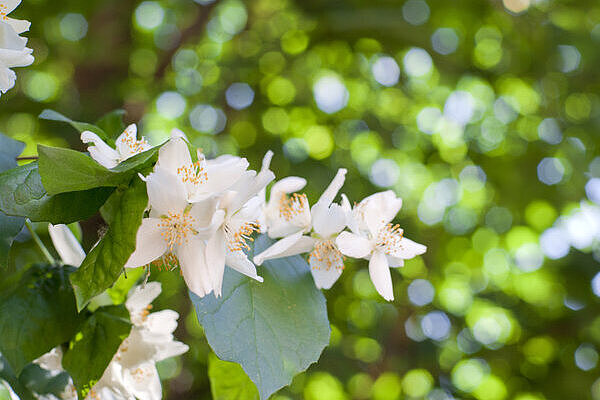Wisteria

What is Wisteria?
Wisteria (Wisteria sinensis) belongs to the legume family and originally comes from China. It is also known as wisteria or Chinese wisteria. It has large, racemose inflorescences that are blue, purple or white, depending on the variety. The flowers have a sweet scent and attract many insects. After flowering, the wisteria forms bean-like legumes containing brown seeds.
Why is Wisteria poisonous to dogs?
Cyclamen contains three different toxins that affect all parts of the plant: Alkaloids, lectin and glycoside. These substances can lead to severe symptoms of poisoning in dogs, which can even be fatal.
Alkaloids
Alkaloids are contained in all parts of the plant and have a bitter taste. They can be ingested through skin contact with the plant sap. Alkaloids have an effect on the nervous system and the cardiovascular system and can lead to the following symptoms:
- Itching
- skin inflammation
- pain
- nausea
- vomiting
- diarrhea
- cramps
- shortness of breath
- Cardiac arrhythmia
- Circulatory collapse
- Cardiac arrest
Lectin
Lectin is mainly found in the pods and seeds of the blue vine. It is a form of ricin, which is also found in the miracle tree. Lectin binds to the red blood cells and prevents them from transporting oxygen. Just a few seeds can be fatal for a dog. Lectin can lead to the following symptoms:
- Nausea
- vomiting
- diarrhea
- bleeding
- shock
- Kidney failure
Glycoside
Glycoside is also contained in the pods and seeds of the blue vine. It is converted in the body to hydrogen cyanide (prussic acid), which also attacks the nervous system and the cardiovascular system. Glycoside can lead to the following symptoms:
- Nausea
- vomiting
- diarrhea
- cramps
- shortness of breath
- Unconsciousness
- Cardiac arrest
What should I do if my dog has eaten blue vine?
If you suspect or observe that your dog has eaten Wisteria, you should act immediately. Poisoning with Wisteria is always an emergency and can be life-threatening.
First aid
As first aid, you can try giving your dog activated charcoal to bind the poison in the stomach. Activated charcoal is available in tablet form or as a powder to dissolve in water. The dosage depends on your dog's weight. However, you should not give more than 10 grams per kilogram of body weight.
You can also try giving your dog water to rehydrate him and dilute the poison.
However, you should not try to induce vomiting in your dog, as this can irritate the mucous membranes or lead to aspiration.
Vet
You should visit or call a vet as soon as possible to get your dog professional help. Depending on the severity of the poisoning and the time of ingestion, the vet will take various measures to remove the poison from the body and treat the symptoms. These may include
- Gastric lavage
- Inducing vomiting
- infusions
- Medication for cramps, pain or heart problems
- oxygen therapy
- Blood transfusion
For the therapy, it is important that you give the vet as much information as possible about the poisoning, such as
- Which parts of the blue vine your dog has eaten
- How much of it he ate
- When he ate it
- What symptoms he is showing
- Whether he was given activated charcoal or water
How can I prevent bluegrass poisoning?
The best way to prevent bluegrass poisoning is to avoid planting it in your garden in the first place, or at least make sure your dog doesn't have access to it. If you do have Wisteria in your garden, you should take the following precautions:
- Cut the plant back regularly and dispose of the cut parts safely
- Wear gloves and long clothing when cutting the plant to avoid skin contact
- Pick up the fallen pods and seeds and dispose of them safely
- Keep your dog away from the plant and supervise it in the garden
- Train your dog not to eat or gnaw on plants
- Find out about other poisonous plants in your area and avoid them
Wisteria is a beautiful but dangerous plant for dogs. All parts of the plant are poisonous and can lead to severe symptoms of poisoning, which can even be fatal. If you suspect or observe that your dog has eaten Wisteria, you should act immediately and seek veterinary advice. To avoid poisoning with Wisteria, you should not plant this plant in your garden in the first place or at least make sure that your dog does not have access to it.
Properties 5
Are you looking for other ingredients with a specific property?
Just click on them to find more.
If you notice any signs of hypersensitivity or poisoning in your dog, you should see your vet immediately. We are not a substitute for a vet, but we try to be as accurate as possible. Every dog reacts differently and we recommend you get a second opinion or consult your vet if in doubt.
Stay healthy and take good care of your four-legged friend!😊
Similar to Wisteria
Clematis is a genus of around 300 species of perennial plants from the buttercup family. They originally come from the temperate zones of the northern hemisphere, but are now found all over the...
Unfortunately, ivy is poisonous to dogs. Both the leaves and the berries contain saponins, which can lead to symptoms of poisoning. These are vomitingdiarrheasalivationtremblingshortness of...
Jasmine blossom is the flower of plants from the jasmine genus (Jasminum), which belongs to the olive family (Oleaceae). There are over 200 species of jasmine, which are mainly found in the...
Garden honeysuckle (Lonicera caprifolium) belongs to the honeysuckle family (Caprifoliaceae) and is native to southern Europe and North Africa. It is a woody perennial plant that can climb up to 10...



